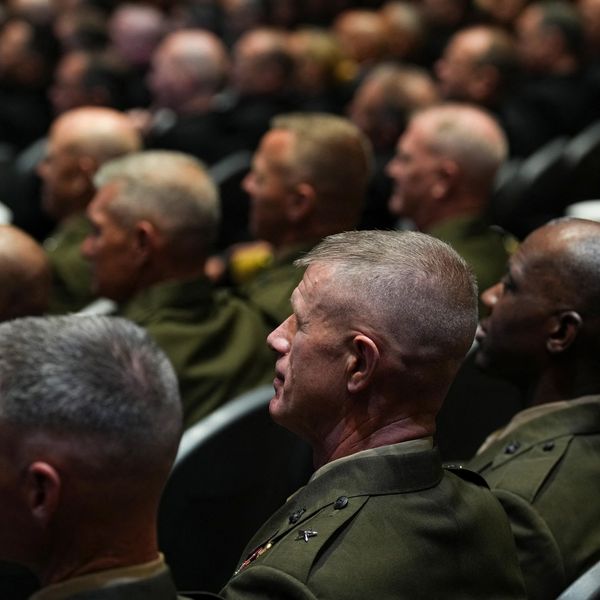Last week, Cambodia and China held a groundbreaking ceremony for a modernization project at Cambodia’s Ream Naval Base. The ceremony came on the heels of a report in The Washington Post alleging that China is secretly building a portion of the naval facility for exclusive use by the Chinese military.
Both governments were quick to deny that China was being allowed to establish its own military base in the country, and the Cambodian government insisted that their constitution prohibits foreign military bases on their soil. China is funding the modernization of the facility, and it seems likely that Chinese forces would be able to make use of it in the future, but this is a modest development that doesn’t warrant a severe reaction from the United States.
The U.S. has worried about possible Chinese installations in Cambodia for many years, and Deputy Secretary of State Wendy Sherman pointedly warned Cambodia about the dangers of hosting Chinese bases when she visited the country in 2021. Some media outlets have echoed the government’s alarmed response. One Time headline blared that a “new Chinese naval base…signals a new era of competition in the Asia-Pacific region.”
It is not even certain that there will be a Chinese naval base in southern Cambodia, and even if there will be one it won’t amount to very much. The same article asserted that the “establishment of a Chinese naval base in Cambodia would boost Beijing’s aspirations of becoming a true global power with a network of military facilities around the world.”
Not to be outdone in fearmongering, The Wall Street Journal published an editorial warning about “the Chinese Navy’s Great Leap Forward.” The editorial refers to the “proliferation of PLA bases,” but cannot point to a single new base that has resulted from this supposed proliferation. Contrary to this breathless reporting and commentary, China doesn’t stand to gain much at all from access to this base, and it is far from being the start of a Chinese empire of bases.
For one thing, the Cambodian facility in question is not very large, so whatever benefits it might offer to the PLA Navy would be commensurately limited. John Bradford analyzed the potential significance of a Chinese base earlier this year and concluded that “it would have modest impact on the overall military balance.” For that reason, Bradford wrote, “the American diplomatic response seems ham-fisted or even counterproductive.”
Chen Heang has also pointed out that Cambodian geography is not well-suited to Chinese needs: “Most notably, the waters off Cambodia’s coasts are not deep enough to be useful to a powerful navy.”
Whatever the Chinese military gets from having access to this facility would also be constrained by the fact that the Cambodian government does not want to appear to be compromising on its sovereignty.
More to the point, a Chinese base in Cambodia would not be a threat to U.S. or allied security. Lyle Goldstein of Defense Priorities commented in response to the Post report: “Overreacting to expected developments related to China’s rise would not make Americans safer or more prosperous and is most likely to escalate regional tensions.”
Moreover, exaggerating the importance of a potential Chinese military presence in Cambodia is unfortunately in keeping with Washington’s tendency to inflate the Chinese military threat, as the Quincy Institute’s Michael Swaine has laid out in a new report.
The Cambodian government has been developing even closer ties with China in recent years, and tensions with the United States over Washington’s human rights criticism and sanctions have led to the deterioration of nascent military cooperation with Phnom Penh. The U.S. relationship with Cambodia was already badly strained under Trump, and it was because of these strains that their government demolished U.S.-funded structures that had been built at Ream. Deputy Secretary Sherman’s visit seems to have gone over like a lead balloon, and further complaints about China’s involvement with the facility will likely make matters worse. The Biden administration still has time to correct course and stop the hectoring, but they are off to a shaky start.
U.S. policymakers are hypersensitive to the possibility of new Chinese bases in different countries despite the lack of evidence that any bases are being planned or even welcome in their would-be host states. The Pentagon has sounded the alarm about a possible base in Equatorial Guinea that apparently isn’t being built, and the State Department rushed officials to the Solomon Islands to discourage them from agreeing to a base when their government had already explicitly ruled that out. There is only one Chinese base outside Chinese territory in Djibouti, and official Washington is neuralgic over the prospect of a second one anywhere.
While the U.S. keeps worrying about phantom Chinese bases, it still presides over a network of many hundreds of its own installations. So why is there such anxiety about the possibility of a single new Chinese military base? While we cannot know for sure, Bradford concludes that “the United States seems to be simply flailing about to compensate for its relative loss of geopolitical influence.”
The U.S. would be wiser to stop hectoring other states over decisions about their own affairs and to devote half as much time and energy to constructive engagement with governments in Asia and the Pacific as it does to warning them about China’s intentions.
The U.S. has an ugly history of interference, destruction, and neglect in its dealings with Cambodia over more than half a century, so it should hardly come as a surprise that their government seeks closer cooperation with other powers. China and Cambodia have a longstanding cooperative relationship dating back decades, and it is natural and predictable that this relationship would grow closer as China becomes more powerful. If there is a Chinese base in Cambodia in the future, Sebastain Strangio explained recently that “it would…signify the bankruptcy of three decades of U.S. policy toward the country.”
Unfortunately, we know only too well that the bankruptcy of a policy is no impediment to its continuation, and that appears to be the case here as well.
If the U.S. wants to have greater influence in countries like Cambodia, it will have to be willing to offer them more than it has in the past. The U.S. has refused to waive $500 million in debt that the Cambodian government owes Washington from the early 1970s, but it makes no sense to continue holding that over their heads. Forgiving that debt would be a relatively easy way to earn some goodwill and political capital. Gestures like that won’t repair the consequences of decades of neglect, but it would demonstrate a willingness to compromise and pay attention to Cambodian interests that has been lacking for a very long time.
















